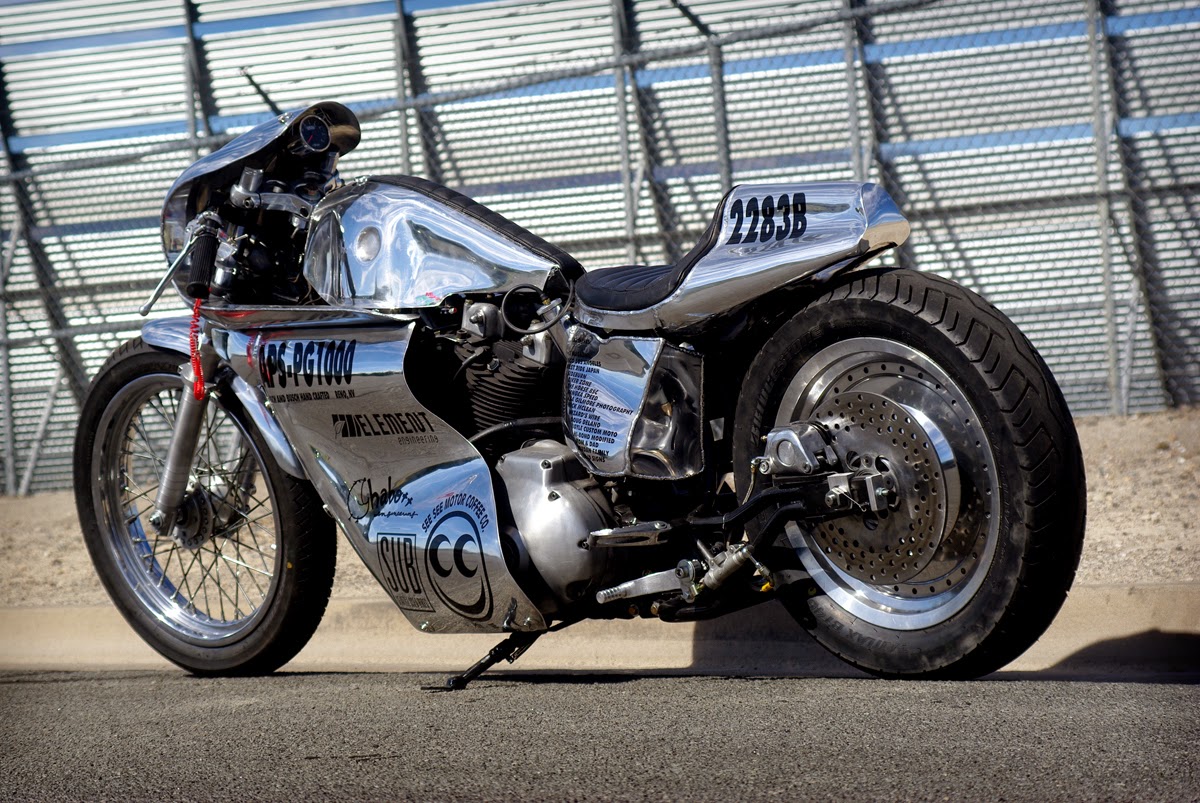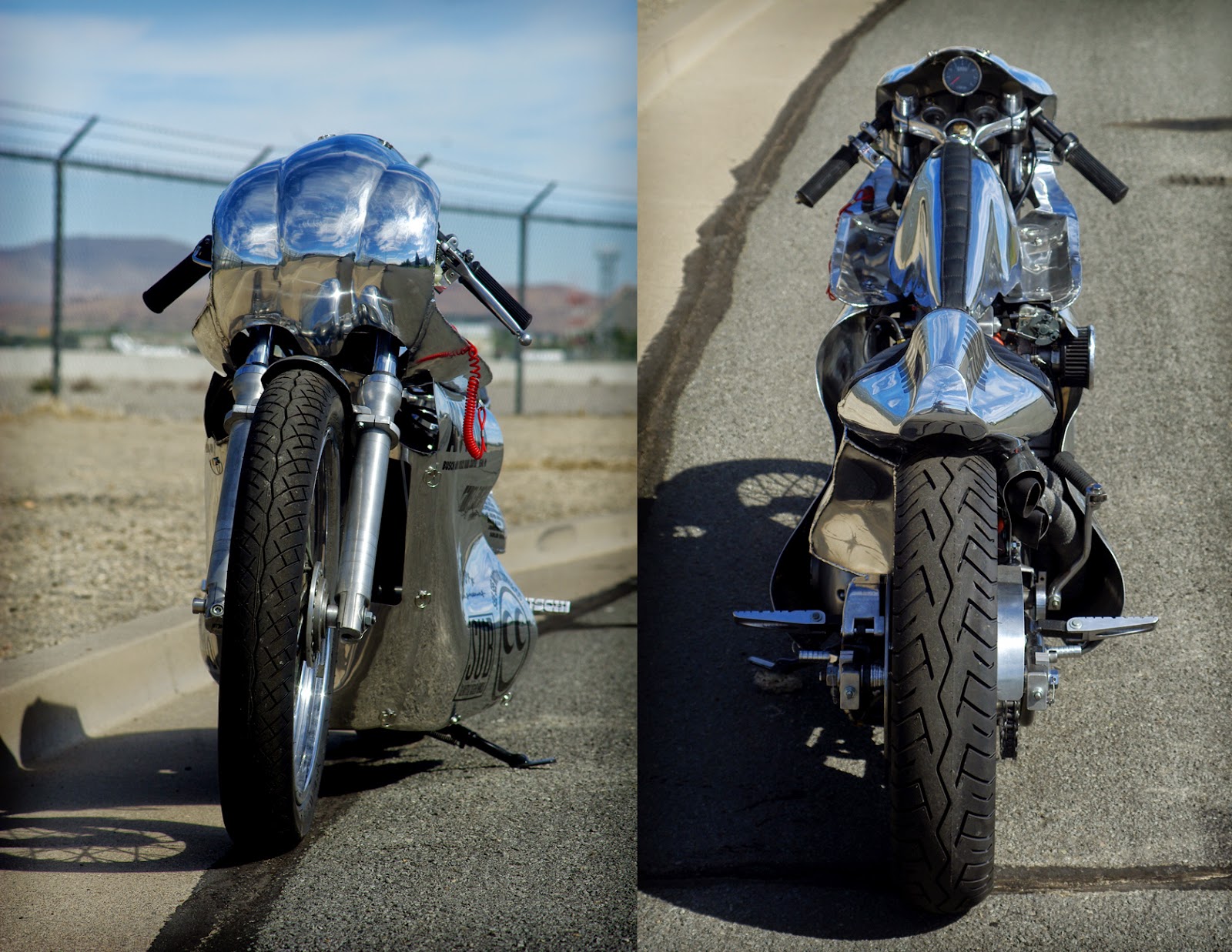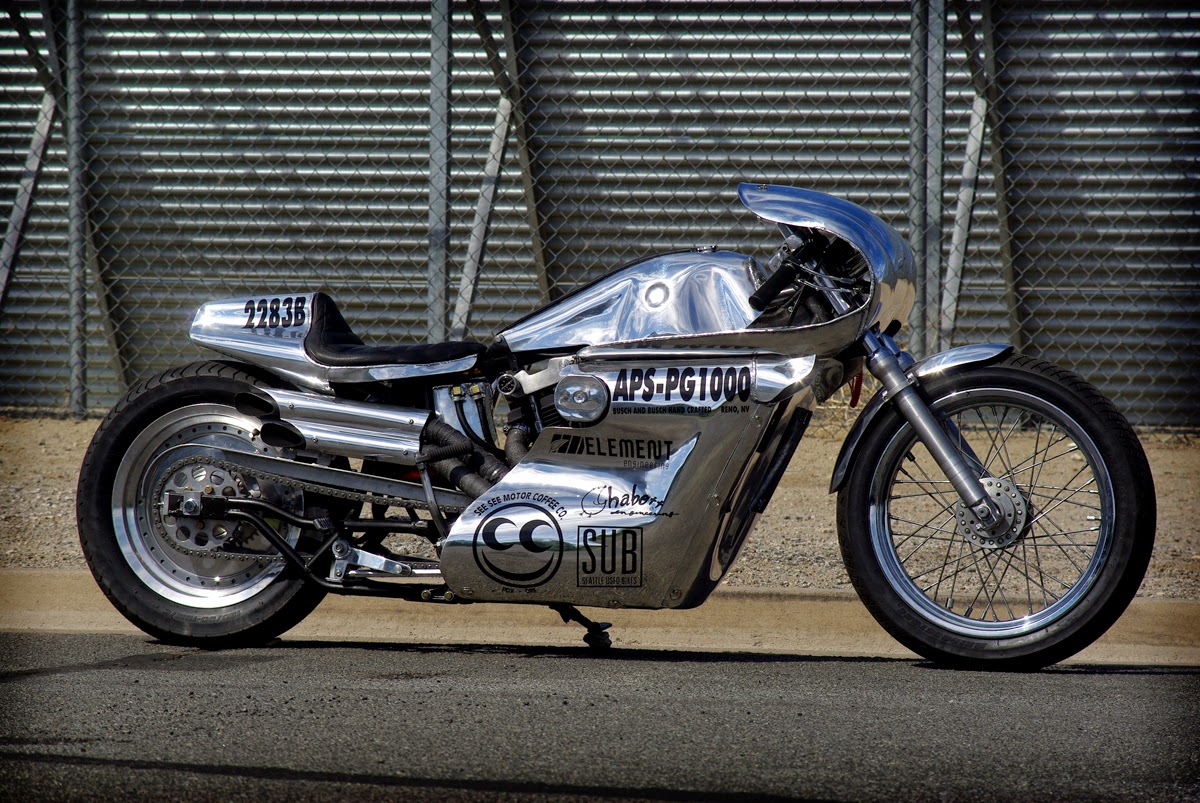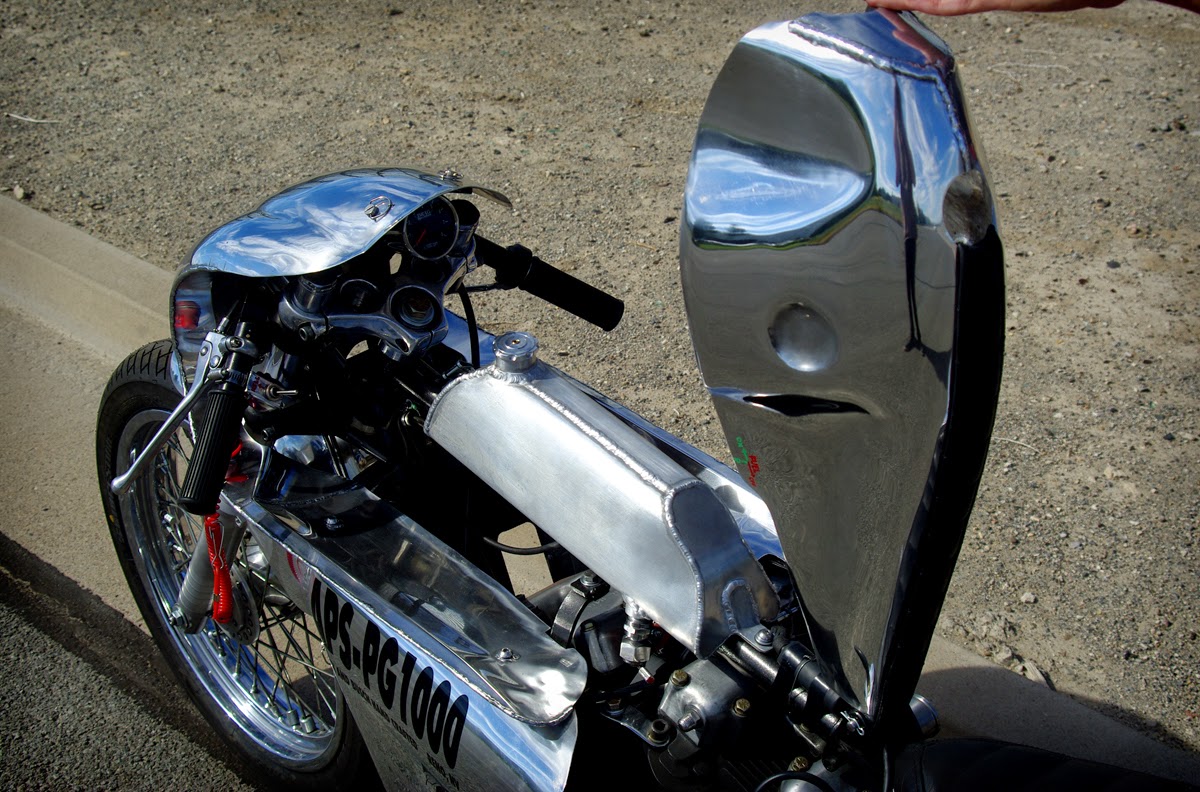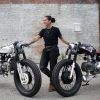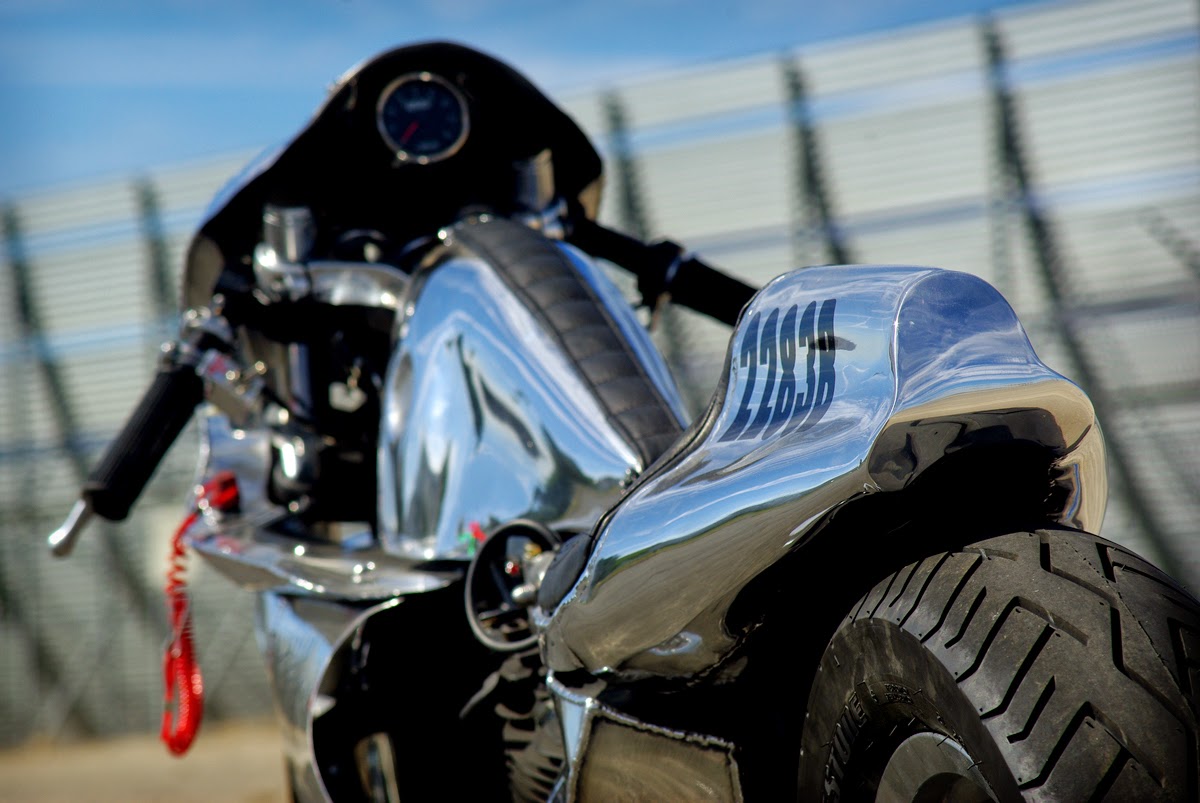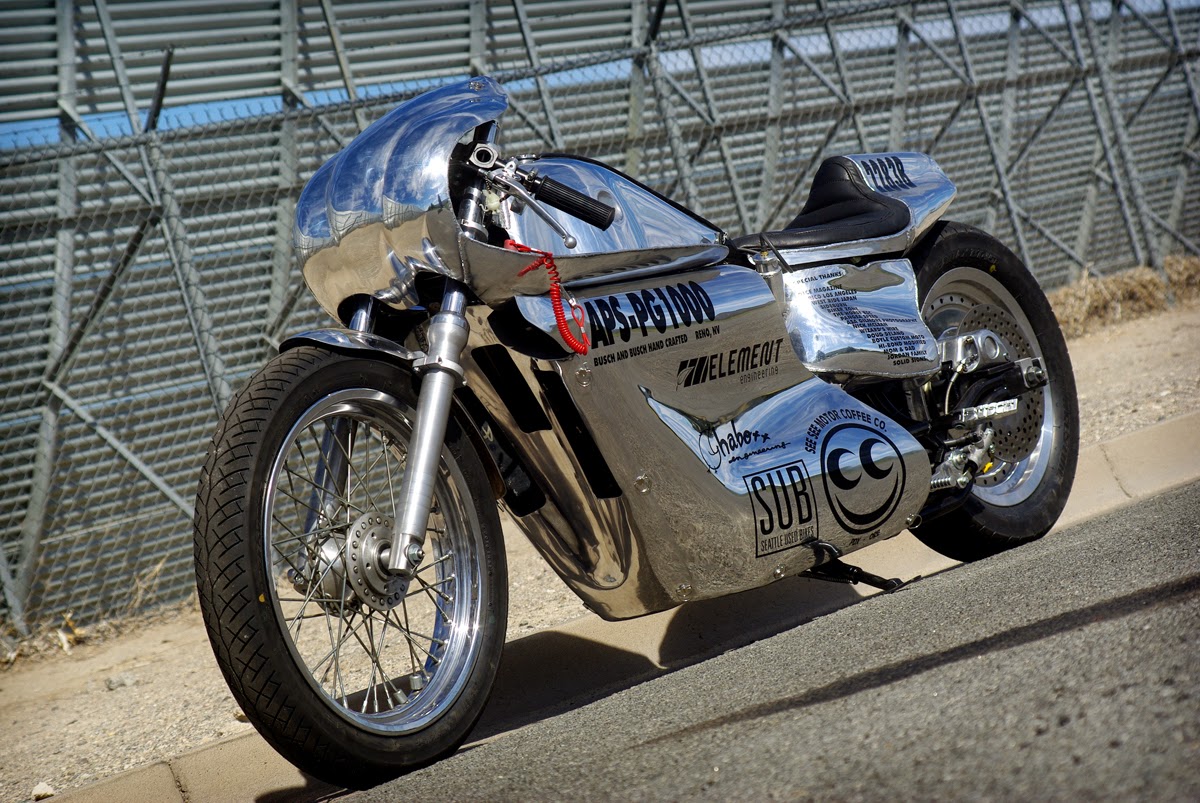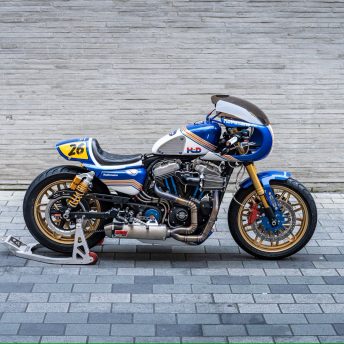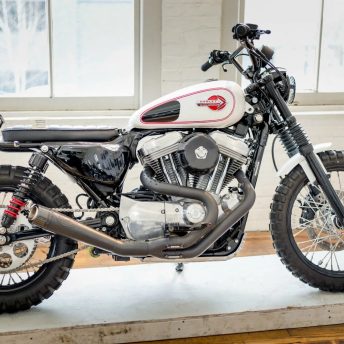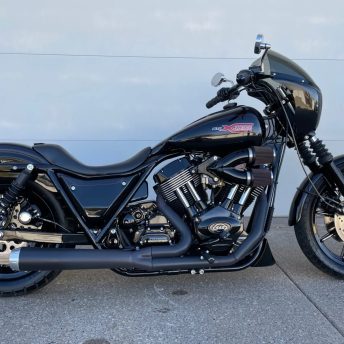Busch and Busch build beautiful bikes, there’s no denying it. In fact, I was so in love with their Bultaco Matador that I almost bought it! Their most recent build, however, is much more than just a visual feast, despite being jaw-droppingly sexy. The Busch and Busch Harley Davidson XLCH is a purpose-built land speed racer. It’s bodywork required epic design, fabricating and finishing hours and what they have planned for its engine will turn it into one helluva mean machine. Like many builds getting it to the stage you see here has been full of trials and tribulations and there are still more tasks to complete to achieve their original vision for the bike. For now the bike is ready for its first run down the salt…but even getting that done has been a challenge. I caught up with Lance Busch to get the low down on the bike he and brother Danny built over the past 2 years, here’s the story as he explained it…
“You wouldn’t believe how the bike looked when we first got it, so I won’t even show a picture, I will leave that up to your imagination- but it was definitely a diamond in the rough. A 1972 XLCH Ironhead Sportster motor, in an early 70’s XL frame, with lots of stuff zip tied on it to make it look complete. The frame had already been converted to an Arlen ness neck sometime back, and it was actually well done- it was just the rest of the bike that had been cobbled together to make a sort of board track/skinny tire/street fighter/80’s Hot Bike? In any case, the first thing we did when we got home was toss everything in the scrap pile and swapped frames. The skinny cast wheels and engine went in another project for several years, while the frame got the donation of running gear and wheels from another Ironhead we had. We then mocked on a Bultaco Sherpa plastic tank, some clip-ons, a cobra seat, and drag pipes.
It actually looked pretty tough! And, with the 5” backbone stretch of the Ness Hardhead, it felt pretty cool when you leaned way down on the clip-ons. It definitely had a drag bike feel to it, so we knew we were on to something. With the Bultaco tank as a “buck” of sorts, we made the fuel cover (more on that later) out of aluminum, and it was at that point we make a tail section as well. When that was done, we decided to go all out, and whipped up some Photoshop concepts of a full fairing. Within three days, the excitement had overwhelmed us and the side panels were roughed out and mocked into place. Then came the front windscreen, then another, then a THIRD, and by that time it had really started to take on its final appearance.”
“The oil bag came next, and it looked pretty good, but we had decided the bike would be turbo powered. The only place to hang the turbo was right where the original horseshoe bag sat on the right side, so we had to remake that, but larger to keep some semblance of oil capacity. With the tank remade, the tail section was woefully undersized in proportion! So the tail section got remade, and then we were done with the easy part….
For a full year we had been mocking and re-mocking the bodywork, figuring out what looked best, where the pipes for the turbo would go, etc. We honestly spent more time staring at it and thinking than actually fabricating. And not to mention- the rough out on the bodywork was a far cry from what you see in the pics- there was the matter of welding all the seams, making sure the oil bag was sealed, mounting tabs that would isolate vibration, filling in the underside of the tail section to act as a fender, trimming here and there, making it fit up with each other panel, and on and on. And that brings up the fuel tank “cover”- the plan all along was to make the tank shaped like the Bultaco. But the problem was, we needed to be able to access the top of the engine easily, and not have to disconnect fuel lines to do so. At that point, we decided the shell you see would flip up to expose the real tank, which holds about 1 gallon, all we will need for a single run.”
“One of the hardest parts of the build was cramming everything under the bodywork- the side panels flare out to clear the ginormous Sportster primary cover, and the exhaust had to be carefully fit to clear the magneto and the carb. It’s kick only, so getting the lever to clear the exhaust, shifter, and foot peg, while still not hitting the side panel was particularly tough!
With the time crunch to prepare for speed week, and finances in the dumps, we decided to pass on the turbo this year and just finish the bike up to SCTA standards, get it inspected, and make a run to get our toes wet. Unfortunately, Speed Week was cancelled due to rain but we are hoping to make the World Finals make-up event in October. The turbo will have to wait till next year when we have time to build the new exhaust, oil supply, and intake/intercooler ducting to feed the Mikuni HSR42 carb. As it sits now, the exhaust is running where the turbo would have been to fill out the empty gap on the right side. The engine that had originally come in the bike was then swapped back in, until we can build a ground up engine capable of handling the increased compression. Sportsters are not exactly bulletproof!”
“When all the bodywork was mounted, the Dzus fasteners were all tested, everything was lined up, etc., then it came time to polish. I left Danny with the hard job, because making the panels took about half the time that it did to painstakingly metal finish, wet sand, and buff them to the brilliance of chrome! Luckily we had budgeted 3 weeks for that process, so we were not left unprepared.
Everything on the Harley was fabbed in our two car garage- the panels were formed on Harbor “Fright” tools, bashed on a homemade beater bag, sanded by hand and gone over with dull files. We did all the cutting, spacers, axle sliders/brake mount fab and all the tube forming on the 6″ extended rear subframe (it was originally to be a YZ490 swing arm and mono shock, but there was no room for the linkage!). The controls and linkages are handmade, we fit a Ducati Performance steering damper up front, and the forks were turned down and grooved on the lathe. The seat was made by us (leather work is the main focus for our business, “Busch and Busch Hand Crafted). All the machining, all the welding, painting, tire changing, etc. was done in our humble home workshop. I’m sure I left out tons of details, but it was a 2 year on-and-off project, that changed numerous times after it was underway. We fought constantly about the details, but we are extremely proud that we built this start to finish with our own four hands, and it’s definitely our favorite project to date!”
